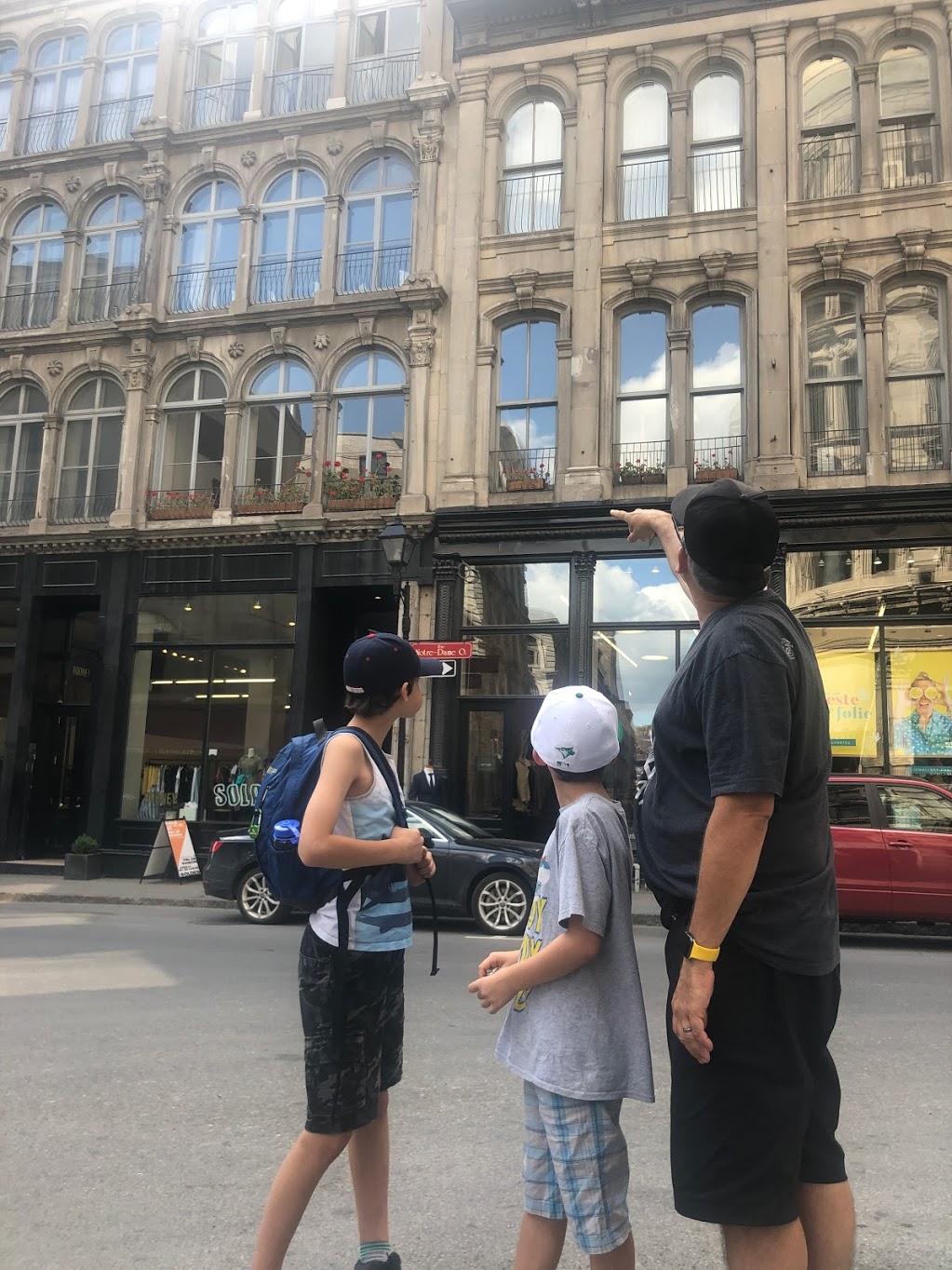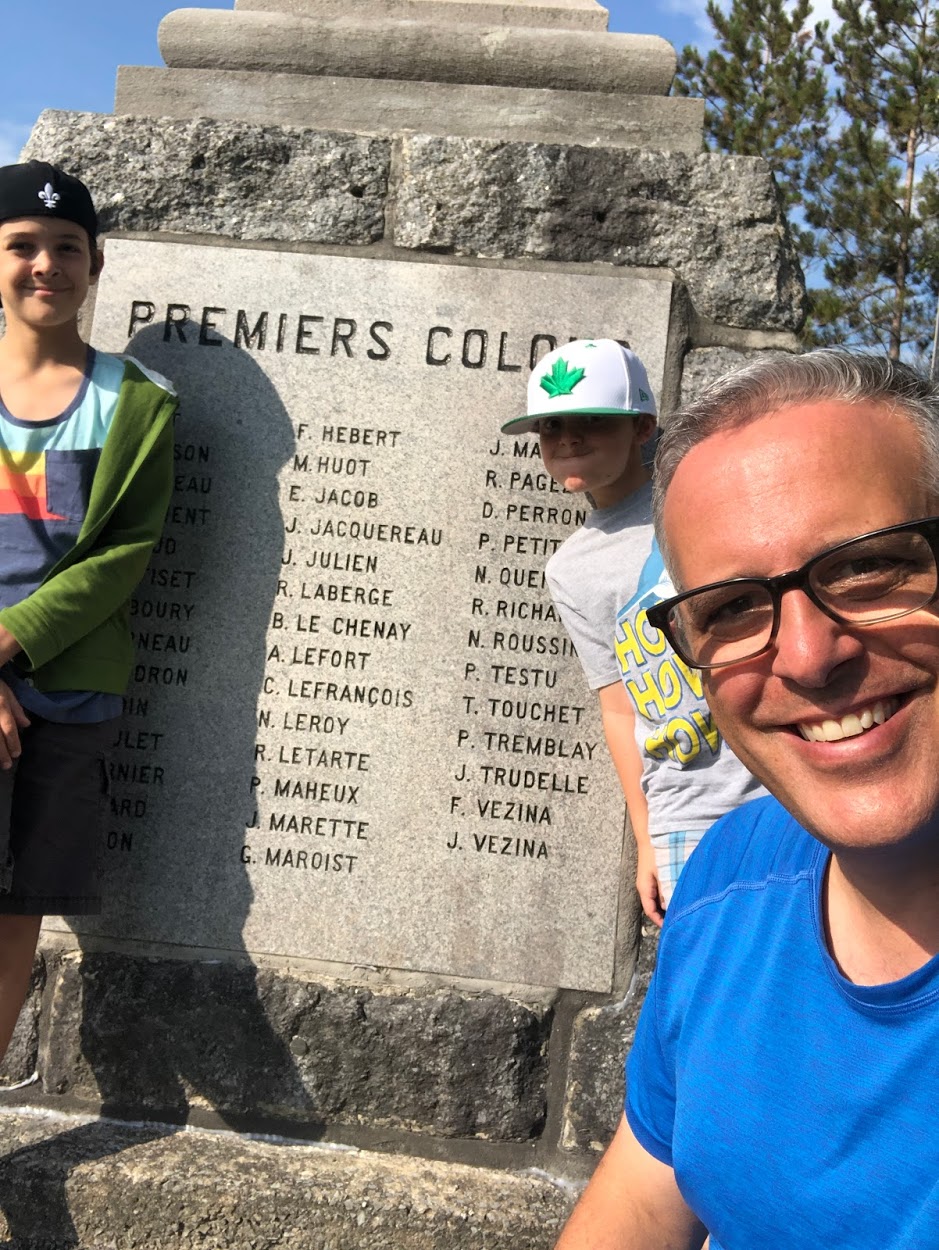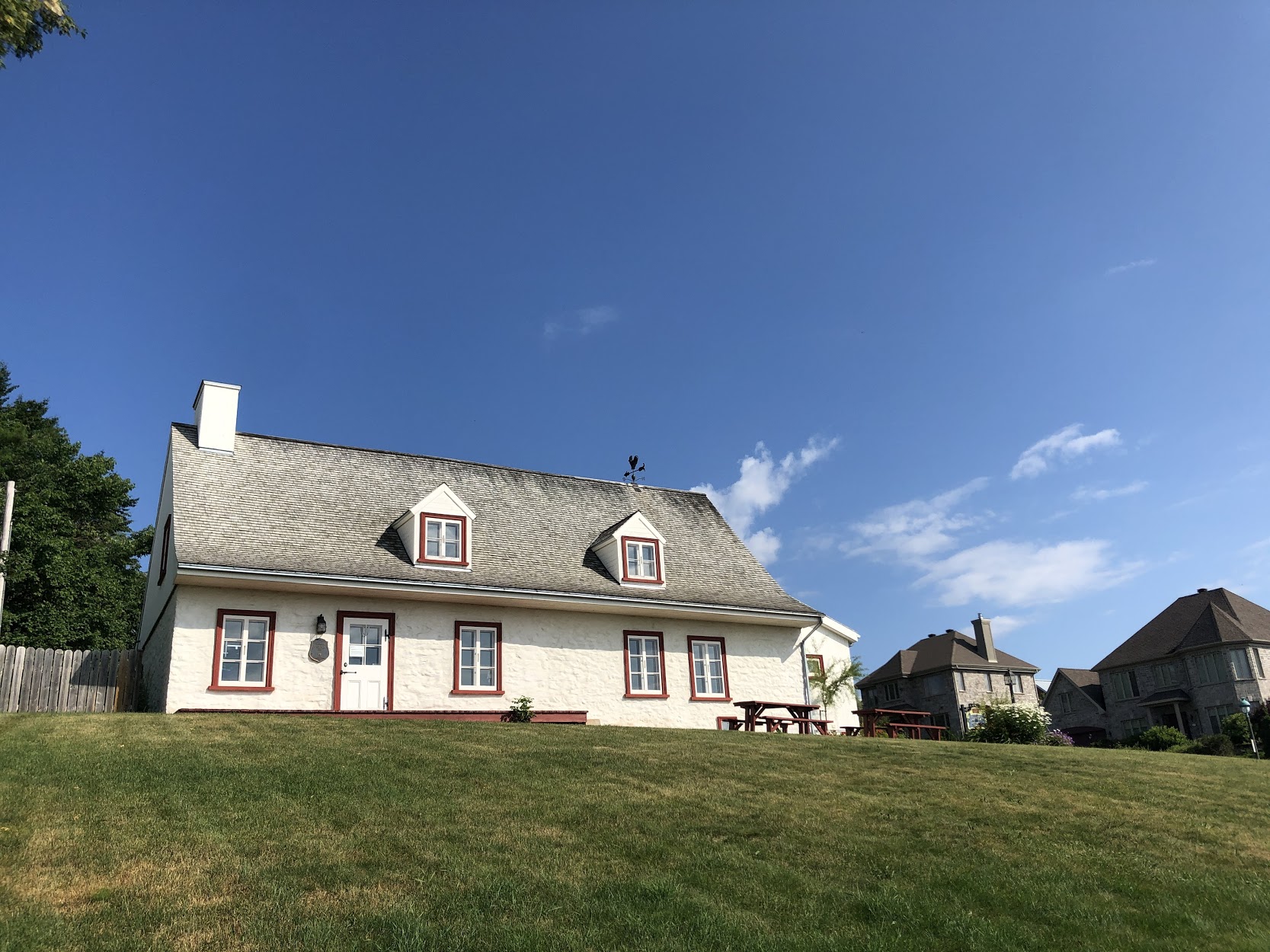“You’re related to royalty,” Lesley Anderson of Ancestry.ca tells me over the phone and a proud smile curls on my face.
I had always wondered how deep my family tree’s roots were in Canada and after spending a few years digging into Ancestry and building out a history, I wanted it confirmed by a professional. Lesley was excited to share the news my Canadian genealogy runs about as deep as someone with a European background can go.
Eustache Martin, who she explained was the first person of European descent born in New France, was my uncle. His father, Abraham Martin, the friend of Samuel de Champlain who would later graze his cows on a hillside overlooking the St Lawrence River was my 11th great-grandfather.

Nearly a century after Martin’s death, the French, led by marquis de Montcalm, would fight a British force led by Maj. Gen. James Wolfe at this pasture now called the Plains of Abraham. The result would be pivotal in shaping control of the continent and creating the Canada we know today.
Were they actual royalty? Not really, but it was close enough for me in an historical sense.
Yes, my Canadian roots run deep, right to our colonial beginnings. But getting the confirmation of events from 400 years ago is not the only thing I have learned from pulling at the digital threads of my family tree.
I discovered that centuries ago, my paternal and maternal Irish families lived about 40 kilometres from each other and when they came to Canada, they built retail empires in Montreal.

And, probably more remarkable than tracing my tree back 400 years to the beginnings of European influence in North America, I found my wife’s birth family.
Armed with only a few names from her adoption papers I used Ancestry to discover her parents, her cousins, and her half siblings. I also learned about her uncle who saved Buckingham Palace from certain destruction in WWII before being captured by the Nazis and ultimately had his POW escape serve as the inspiration for a Hollywood epic.
Now that is a story of royalty.
TAKE NOTES BEFORE IT’S TOO LATE
My sister did a lot of work on our family tree when my grandmother was still alive. She interviewed her extensively, scanned photos and documents and had her make notes explaining who lived where and when. She bound it in big binders and gave it to each of us as Christmas presents.
It was fantastic, but it was limited. She could really only go back 2 generations from my grandmother, to my great great grandparents. She found pictures of their old homesteads in Scotland and Northern Ireland, and some old marriage certificates. It was as extensive as my grandmother and her sisters could remember.

That’s how genealogy used to work: you’d have to find the oldest living person in your family and get them to share what they knew before it faded away. Sure, governments and churches kept records but those were squirrelled away in random libraries on microfilm and hard for everyone to get at. To build a family tree took commitment and often ran into roadblocks.
So the stories of how my family got from there to here were never fully fleshed out until the age of Ancestry.
When I shared my sister’s work online it opened up dozens of connections to other people’s trees where I could compare notes, find official documents, and dig deeper and deeper.
“It wasn’t necessarily ‘from Ancestry,'” Lesley explains to me, “but it was because people made it public on Ancestry that you could make these connections.”
And here’s a warning: just because it’s online doesn’t make the task shorter, it just lets you go deeper faster. I found myself spending hours and hours pulling at threads, tracing names backwards and forwards, rooting through the historical documents that Ancestry had congregated from official government and religious archives.
MONTREAL AND QUEBEC
In the summer of 2019, armed with my findings, I did what Lesley told me most people do once they uncover their history – travel to see where it all began. The first part of our summer of adventure would be a trip to Montreal and Quebec City.
My great grandfather settled in Montreal as a metalworker after WWI and that’s where my grandmother and mother grew up. When I was growing up, that’s where all of our big family things happened. We’d go to my grandparents for Christmas or summer vacation, and even when we moved to Vancouver from Ontario, Montreal was still where I felt my mom’s family roots were.
And then, after pulling on the threads of my dad’s mother’s family tree, I unspooled the history of the Murphys and discovered an even deeper connection to the town.
Some time after 1819, my great great great grandfather John Murphy followed his brother Alexander McAuley Murphy to Montreal. There, Alexander had started a business selling Irish linens just a few blocks from Notre Dame.

Through Ancestry I found his obituary which explained “Mr. Murphy’s store was always a great rendezvous for all kinds of Irish linen, etc. The business was carried on in the same store where Mr. Murphy had been so long and well known by his two sons, Alexander and John, under the title of Murphy Brothers.” Eventually the store would move to the legendary St Catharine’s Street and in 1905 the company would be sold to Simpsons.
I went for a walk early one morning to the cemetery on the NE side of Mont Royal and wandered the headstones before finding this obelisk marking the final resting place of Alexander McAuley Murphy, my 3rd great granduncle.

After our visit in Montreal, I took the boys to Quebec City to fulfill a lifelong dream: visit the Plains of Abraham.
As a Canadian history buff, I had always been fascinated by this place, after all, it was where the destiny of Canada was decided. To find out my 11x great grandfather is Abraham Martin that this place is part of my family’s history in Canada, that this place is where my family tree first settled in North America… well that’s just magic.

400 years ago this was my family’s home. I can’t even begin to describe the feeling that gave me. To just know “this is where it all began,” filled me with pride.
Another part of our pilgrimage involved me I taking the boys on a trip to Boischatel, just east of Quebec City to find a monument to the settlers present at the first mass at the town of L’Ange Gardien.
21 yr old Francois Vézina (my 8x great grandfather) was one of those men. He came to New France from La Rochelle and would soon marry Jeanne de Marie, a fille du Roi.

All in all, there are about a dozen filles du roi in my family tree. All of them remarkable women who signed their life to the king for the sole purpose of populating a strange, new world.
The Vézina family would stay in L’Ange Gardien for generations, eventually building a homestead in 1720 that has now been designated an historic monument. Today Maison Vézina is an interpretation center dedicated to military history as well as land use and rural life in days gone by.

Oh, and steps from Maison Vézina (I mean literally in the backyard of my family’s property) is Montmorency Falls, a remarkable Canadian landmark a full 30m taller than Niagara Falls.

I had always wondered “how Canadian” my family was, the answer came back clearly: very Canadian.
NORTHERN IRELAND
When you look through hints on Ancestry, you get to compare your work and tree with other people. If your DNA is part of the process, it’s even easier to find and compare history with others on the site.
Constantly seeing similar user names come up when looking up your family tree can be a godsend. As Lesley explains, “building a family tree is not just about what you know but what other people know.” You use their information as clues or as proofs to verify what you’ve found.
And that’s how I found my 4th cousin, Diane Murphy. As I was building out the Murphy side of my tree, I noticed that Diane had many of the same names on her tree, that the photos associated with these people were from her findings, and that she had visited the cemetery where my great great great grandparents were buried.
I reached out to her through the site and she shared with me her info
The Murphys (the linen retailers) came to Canada in 1819 from Carrickfergus, Northern Ireland, a small village on Belfast Lough, just to the north of the capital. When Alexander McAuley married Jane Allen, her father didn’t approve, so they left Carrickfergus to start a new life in Canada.

Just a few minutes west of Carrickfergus is where John and Christian Murphy are buried. It’s down a random road and over a nondescript hill where you find a gravel parking lot and a small church amongst the scattered farms. I would never have known it was there without Diane’s help.
So, on a wet and windy Irish day, I laid some flowers for John and Christian and thanked them for the love and support they gave their sons. The courage they must have had to watch their boys board the boats and sail off to a new country. I was so grateful to have found this place.

After we left Carrickfergus, and my father’s Irish roots, we headed half an hour inland to Ballymena, where my mother’s family tree reached.
My great grandfather left Scotland to come to Canada after WWI, but before that, his family is Irish. Over the course of a few decades, the families bounced back and forth across the Irish Sea, but thanks to the work of my mother and sister, I know that my great grandfather’s family is from County Antrim. In fact, my great great grandfather, John Lamont Keelty, was born “at the foot of Slemish Mountain.”

Yes, that Slemish Mountain, where it’s said a young slave named Patrick tended his pigs. Of course you know him now as St Patrick and every year on March 17, the hike up Slemish is a popular trek for pilgrims.
Just up the road from Ballymena is Bushmills, home to the oldest licensed distillery in the world. It also happens to be where my wife’s family’s Irish roots are laid.

This is the serendipitous part of family tree building. Over a stretch of less than one hundred kilometres, my wife and I can trace roots that span 200 years. The factors that must have conspired to have taken people from that side of the world and bring them to this side, and then to other side of Canada for us to meet? Well, that’s nothing less than kismet.
All of this I never would have discovered if I hadn’t noticed Ray Carroll‘s username constantly popping up when I was pulling threads on her tree. Much like Diane Murphy directed me to a family plot, Ray opened up her entire ancestry.
SKEETS OGILVIE
I knew my wife’s birth mother’s name, but that was about it. A few years ago I had been able to build out some of her aunts and uncles and a few of her birth mother’s relatives, but nothing too detailed. As I was digging, I kept noticing the same username showing up on a lot of the results.
So, as with Diane, I reached out to Ray through Ancestry to confirm the things I had found and to see if he knew anything more about my wife’s birth father. He and his sisters confirmed all I had uncovered and then added more. We connected our trees and, within a weekend, I had her entire maternal side flushed out with photos and stories and more.
My wife has always said she wasn’t curious about her birth family, she had been raised with love and as far as she was concerned she was Ukranian-Canadian, not the English-Irish blend my Ancestry searches would eventually uncover. All she wanted was to see a picture of her birth parents to perhaps have a hint as to where her features came from.
And so, with some help from Ray, I found the photos of her birth parents and then, by doing some simple searches I filled out both sides if her family tree and discovered the story of Alfred ‘Skeets’ Ogilvie, my wife’s great uncle.

Skeets was a pilot in WWII. Actually, that’s an understatement – he was a hero of WWII. Based out of the south coast of England, he would run sorties around the coast chasing the Jerries back across the English Channel.
His story is told in a book by his son, You Never Know Your Luck, and is filled with diary entries like the one about the day he intercepted a bomber dumping its load in the courtyard of Buckingham Palace with Queen Wilhelmina of the Netherlands standing watch from a balcony.
Over London again and the Jerries are really throwing everything in now. We were ordered to intercept a heavy bomber formation headed for Northolt.
I saw a Dornier Do 17 diving below and alone. A break for me, and I attacked him from the beam. The rear gunner fired back but packed up on my second attack. The third time I got in close and saw pieces coming off the enemy plane as well as a fire in his ‘glass house’, just as two of the crew baled out, one narrowly missing going into my prop. It was an incredible and terrifying sight to see the bomber spin slowly, suddenly the tail snapped off and then the wings and the wreckage plunged into the heart of London. I learned later that it landed on a jeweller’s shop by Victoria Station.
On a later mission over France, Skeets would be shot down. He was severely wounded and captured. Following many months of hospitalization, he was sent to Stalag Luft III, where he took part in the planning and preparations for the Great Escape. Skeets was the last man to make it out of the tunnel known as “Harry” before it was discovered.
Yes, that Great Escape.

GENEALOGY IS A COMMUNITY EFFORT
I started on Ancestry because I wanted to know why my family came to Canada and how long they had been here. I found out they have been here since the beginning. I found that my wife and I’s history spent centuries a day’s carriage ride from each other.
Lesley said I was related to royalty, and while I have the roots of Canada on my tree, it was my wife’s history that contained the hero that saved royalty.
Tracing a family tree is still a collaborative effort. Just as my sister interviewed my grandmother, we now connect with others online to compare notes and discoveries and memories.
The only way I could trace back my tree was by building off the hints already shared by Diane and Ray and others and connecting with findings from still other people and then comparing them with official records. As Lesely explained to me “if everyone kept their tree private, you’d never have found all of this.”
It really is true. This effort showed me how connected we all are sharing branches of the same tree and how working together can bring amazing stories of history to life.

And I still have so many hinting leaves left to pick at.
Disclosure: this post is earned media, not sponsored. I paid for my Ancestry memberships on my own. My interview with Lesley Anderson was done to confirm the research I had done and to learn more about Ancestry.

Dad. Broadcaster. Writer.
Three time Guinness World Record Holder.
I run the world for Team Diabetes.
